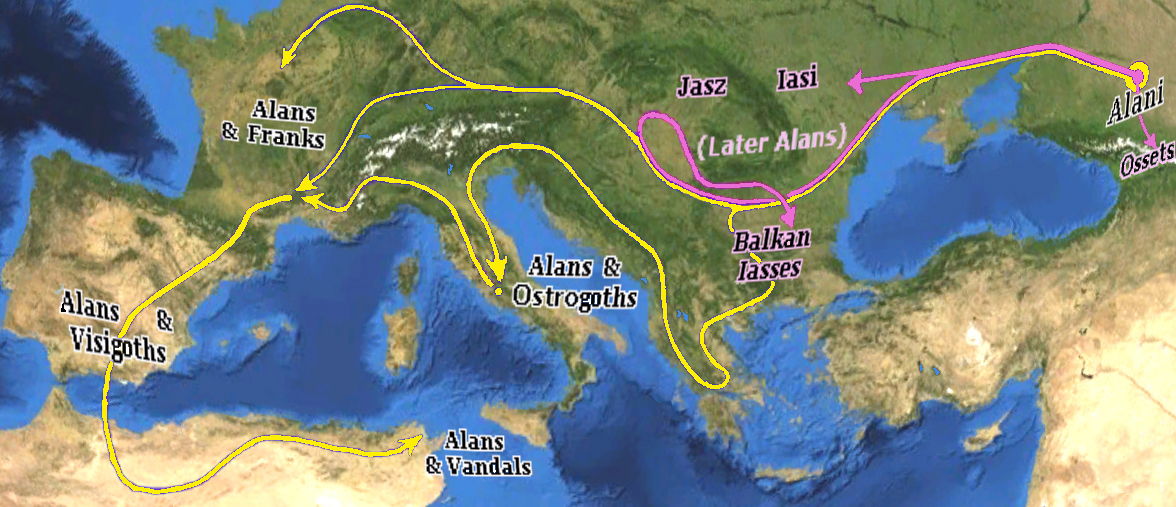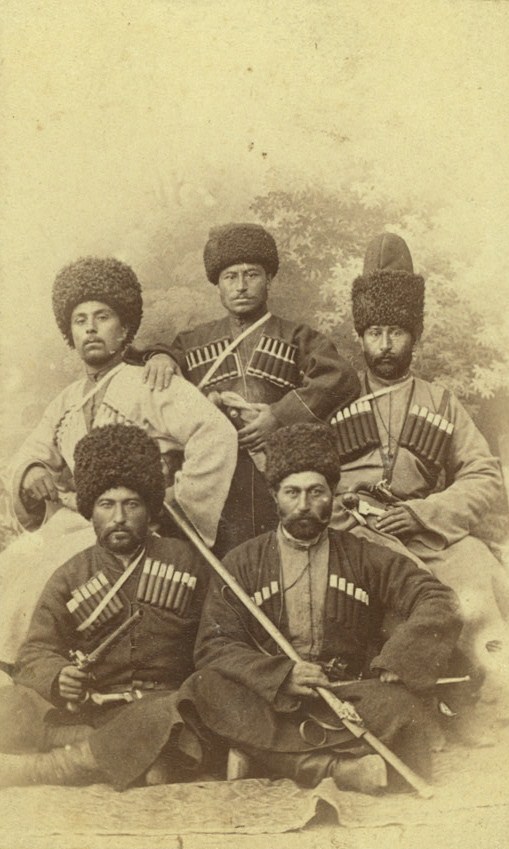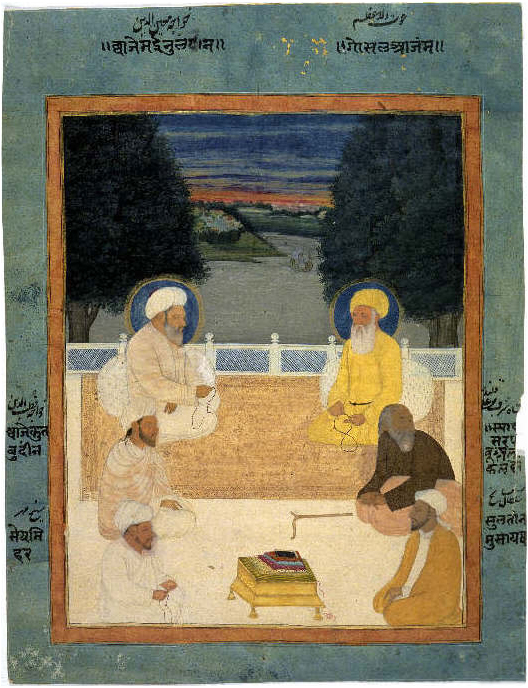|
Quonahalla
Quonahalla ( Chechen: Къо́нахалла, къонах (quonah) - "a worthy man") is the Chechen ethic code. Origin There are suggestions that the code was formed in the Alanian era (5th-13th centuries). The characteristics of the code were influenced by the events of the time when war was a normal state for the Nakh peoples. The antiquity of the code is evidenced by numerous parallels with the most ancient monuments of the Nart saga. The final form of the code was formed in the Late Middle Ages. At a later time, the spiritual aspect of the code was strongly influenced by Sufism, according to which the main meaning of human existence is the path of spiritual perfection. However, unlike Sufism, the ''quonah'' was not obliged to renounce earthly joys and participation in socio-political life. According to legend, the code was first recorded in religious and ethical treatises of the 17th-18th centuries. Until now, the code has come down in fragmentary form in the chronicle ... [...More Info...] [...Related Items...] OR: [Wikipedia] [Google] [Baidu] |
Chechens
The Chechens ( ; , , Old Chechen: Нахчой, ''Naxçoy''), historically also known as ''Kistin, Kisti'' and ''Durdzuks'', are a Northeast Caucasian languages, Northeast Caucasian ethnic group of the Nakh peoples native to the North Caucasus. "Europe" (pp. 68–69); "Asia" (pp. 90–91): "A commonly accepted division between Asia and Europe ... is formed by the Ural Mountains, Ural River, Caspian Sea, Caucasus Mountains, and the Black Sea with its outlets, the Bosporus and Dardanelles." They are the largest ethnic group in the region and refer to themselves as Nokhchiy (; singular Nokhchi, Nokhcho, Nakhchuo or Nakhche). The vast majority of Chechens are Muslims and live in Republic of Chechnya, Chechnya, an Republics of Russia, autonomous republic within the Russian Federation. The North Caucasus has been invaded numerous times throughout history. Its isolated terrain and the strategic value outsiders have placed on the areas settled by Chechens has contributed much to the Chec ... [...More Info...] [...Related Items...] OR: [Wikipedia] [Google] [Baidu] |
Quonahalla
Quonahalla ( Chechen: Къо́нахалла, къонах (quonah) - "a worthy man") is the Chechen ethic code. Origin There are suggestions that the code was formed in the Alanian era (5th-13th centuries). The characteristics of the code were influenced by the events of the time when war was a normal state for the Nakh peoples. The antiquity of the code is evidenced by numerous parallels with the most ancient monuments of the Nart saga. The final form of the code was formed in the Late Middle Ages. At a later time, the spiritual aspect of the code was strongly influenced by Sufism, according to which the main meaning of human existence is the path of spiritual perfection. However, unlike Sufism, the ''quonah'' was not obliged to renounce earthly joys and participation in socio-political life. According to legend, the code was first recorded in religious and ethical treatises of the 17th-18th centuries. Until now, the code has come down in fragmentary form in the chronicle ... [...More Info...] [...Related Items...] OR: [Wikipedia] [Google] [Baidu] |
Alans
The Alans () were an ancient and medieval Iranian peoples, Iranic Eurasian nomads, nomadic pastoral people who migrated to what is today North Caucasus – while some continued on to Europe and later North Africa. They are generally regarded as part of the Sarmatians, and possibly related to the Massagetae. Modern historians have connected the Alans with the Central Asian Yancai of China, Chinese sources and with the Aorsi of Ancient Rome, Roman sources. Having migrated westwards and becoming dominant among the Sarmatians on the Pontic–Caspian steppe, the Alans are mentioned by Roman sources in the . At that time they had settled the region north of the Black Sea and frequently raided the Parthian Empire and the South Caucasus provinces of the Roman Empire. From the Goths broke their power on the Pontic Steppe, thereby assimilating a sizeable portion of the associated Alans. Upon the Huns, Hunnic defeat of the Goths on the Pontic Steppe around , many of the Alans migrated w ... [...More Info...] [...Related Items...] OR: [Wikipedia] [Google] [Baidu] |
Nakh Peoples
The Nakh peoples are a group of North Caucasian languages, North Caucasian peoples identified by their use of the Nakh languages and other cultural similarities. These are chiefly the ethnic Chechen people, Chechen, Ingush people, Ingush and Bats people, Bats peoples of the North Caucasus, including closely related minor or historical Ethnic group, groups. The ethnonyms "Vainakh" and "Nakh" "Nakh peoples" and "Vainakh peoples" are two terms that were coined by Soviet ethnographers such as the Russian linguist and Ingush ethnographer . The reasoning behind the creation of these terms was to unite the closely related nations of Chechen people, Chechen and Ingush people, Ingush into one term. The terms "Vainakh" (our people) and "Nakh" (people) were first used as a term to unite two peoples in 1928. It was subsequently popularized by other Soviet authors, poets, and historians such as Mamakaev and Volkova in their research. According to the historian Victor Schnirelmann, the ter ... [...More Info...] [...Related Items...] OR: [Wikipedia] [Google] [Baidu] |
Nart Saga
The Nart sagas (; ; ) are a series of tales originating from the North Caucasus. They form much of the basic mythology of the ethnic groups in the area, including Abazin, Abkhaz, Circassian, Ossetian, Karachay- Balkar, and to some extent Chechen- Ingush folklore. Etymology The term ''nart'' comes from the Ossetian , which is ''plurale tantum'' of . The derivation of the root ''nar'' is of Iranian origin, from Proto-Iranian ''*nar'' for 'hero, man', descended from Proto-Indo-European '' *h₂nḗr'' (the name of the Roman emperor Nero also derives from this same root). In Ingush and Chechen, the word ''nart'' means 'giant'. Characters Some of the characters who feature prominently in the sagas are: * Sosruko or Soslan ( Ubykh, Abkhaz and Adyghe: ''sawsərəqʷa'' (Саусырыкъо); ) – a hero who sometimes also appears as a trickster * Batraz () – the leader and greatest warrior of the Narts * Satanaya (; ; ) – the mother of the Narts, a fertility fig ... [...More Info...] [...Related Items...] OR: [Wikipedia] [Google] [Baidu] |
Late Middle Ages
The late Middle Ages or late medieval period was the Periodization, period of History of Europe, European history lasting from 1300 to 1500 AD. The late Middle Ages followed the High Middle Ages and preceded the onset of the early modern period (and in much of Europe, the Renaissance). Around 1350, centuries of prosperity and growth in Europe came to a halt. A series of famines and Plague (disease), plagues, including the Great Famine of 1315–1317 and the Black Death, reduced the population to around half of what it had been before the calamities. Along with depopulation came social unrest and endemic warfare. Kingdom of France, France and Kingdom of England, England experienced serious peasant uprisings, such as the Jacquerie and the Peasants' Revolt, as well as over a century of intermittent conflict, the Hundred Years' War. To add to the many problems of the period, the unity of the Catholic Church was temporarily shattered by the Western Schism. Collectively, those events ar ... [...More Info...] [...Related Items...] OR: [Wikipedia] [Google] [Baidu] |
Sufism
Sufism ( or ) is a mysticism, mystic body of religious practice found within Islam which is characterized by a focus on Islamic Tazkiyah, purification, spirituality, ritualism, and Asceticism#Islam, asceticism. Practitioners of Sufism are referred to as "Sufis" (from , ), and historically typically belonged to "orders" known as (pl. ) — congregations formed around a grand (saint) who would be the last in a Silsilah, chain of successive teachers linking back to Muhammad, with the goal of undergoing (self purification) and the hope of reaching the Maqam (Sufism), spiritual station of . The ultimate aim of Sufis is to seek the pleasure of God by endeavoring to return to their original state of purity and natural disposition, known as . Sufism emerged early on in Islamic history, partly as a reaction against the expansion of the early Umayyad Caliphate (661–750) and mainly under the tutelage of Hasan al-Basri. Although Sufis were opposed to dry legalism, they strictly obs ... [...More Info...] [...Related Items...] OR: [Wikipedia] [Google] [Baidu] |
Chechen Language
Chechen ( , ; , , ) is a Northeast Caucasian languages, Northeast Caucasian language spoken by approximately 1.8 million people, mostly in the Chechnya, Chechen Republic and by Chechens, members of the Chechen diaspora throughout Russia and the rest of Europe, Jordan, Turkey, Azerbaijan, Ukraine, Central Asia (mainly Kazakhstan and Kyrgyzstan) and Georgia (country), Georgia. History Before the Caucasian War, Russian conquest, most writings in Chechnya consisted of Islamic texts and clan histories, written usually in Arabic but sometimes also in Chechen using Arabic script. The Chechen literary language was created after the October Revolution, and the Latin script began to be used instead of Arabic for Chechen writing in the mid-1920s. The Cyrillic script was adopted in 1938. Almost the entire library of Chechen medieval writing in Arabic and Georgian script about the land of Chechnya and its people was destroyed by Soviet authorities in 1944, leaving the modern Chechens and mo ... [...More Info...] [...Related Items...] OR: [Wikipedia] [Google] [Baidu] |
Chechnya
Chechnya, officially the Chechen Republic, is a Republics of Russia, republic of Russia. It is situated in the North Caucasus of Eastern Europe, between the Caspian Sea and Black Sea. The republic forms a part of the North Caucasian Federal District, and shares land borders with Georgia (country), Georgia to its south; with the Russian republics of Dagestan, Ingushetia, and North Ossetia–Alania to its east, north, and west; and with Stavropol Krai to its northwest. After the dissolution of the Soviet Union in 1991, the Chechnya and Ingushetia in the Soviet Union, Checheno-Ingush ASSR split into two parts: the Republic of Ingushetia and the Chechen Republic. The latter proclaimed the Chechen Republic of Ichkeria, which declared independence, while the former sided with Russia. Following the First Chechen War of 1994–1996 with Russia, Chechnya gained ''de facto'' independence as the Chechen Republic of Ichkeria, although ''de jure'' it remained a part of Russia. Russian ... [...More Info...] [...Related Items...] OR: [Wikipedia] [Google] [Baidu] |
Codes Of Conduct
A code of conduct is a set of rules outlining the social norm, norms, rules, and responsibilities or proper practices of an individual party or an organization. Companies' codes of conduct A company code of conduct is a set of rules which is commonly written for employees of a company, which protects the business and informs the employees of the company's expectations. It is appropriate for even the smallest of companies to create a document containing important information on expectations for employees. The document does not need to be complex or have elaborate policies. Failure of an employee to follow a company's code of conduct can have negative consequences. In ''Chip Skowron, Morgan Stanley v. Skowron'', 989 F. Supp. 2d 356 (S.D.N.Y. 2013), applying New York's faithless servant doctrine, the court held that a hedge fund's employee engaging in insider trading in violation of his company's code of conduct, which also required him to report his misconduct, must repay his employ ... [...More Info...] [...Related Items...] OR: [Wikipedia] [Google] [Baidu] |
Chechen Culture
Chechen may refer to: *Chechens, an ethnic group of the Caucasus *Chechen language, Northeast Caucasian language * Metopium brownei, also known as the chechen, chechem, or black poisonwood tree *Related to Chechnya (Chechen Republic), a republic within Russia *Related to the former Chechen Republic of Ichkeria The Chechen Republic of Ichkeria ( ; ; ; abbreviated as "ChRI" or "CRI"), known simply as Ichkeria, was a ''de facto'' State (polity), state that controlled most of the former Checheno-Ingush Autonomous Soviet Socialist Republic, Checheno-Ingus ... See also * Ichkeria (other) {{disambig Language and nationality disambiguation pages ... [...More Info...] [...Related Items...] OR: [Wikipedia] [Google] [Baidu] |
Culture Of Russia By Ethnicity
Culture ( ) is a concept that encompasses the social behavior, institutions, and Social norm, norms found in human societies, as well as the knowledge, beliefs, arts, laws, Social norm, customs, capabilities, Attitude (psychology), attitudes, and habits of the individuals in these groups.Tylor, Edward. (1871). ''Primitive Culture''. Vol 1. New York: J. P. Putnam's Son Culture often originates from or is attributed to a specific region or location. Humans acquire culture through the learning processes of enculturation and socialization, which is shown by the diversity of cultures across societies. A cultural norm codifies acceptable conduct in society; it serves as a guideline for behavior, dress, language, and demeanor in a situation, which serves as a template for expectations in a social group. Accepting only a monoculturalism, monoculture in a social group can bear risks, just as a single species can wither in the face of environmental change, for lack of functional respo ... [...More Info...] [...Related Items...] OR: [Wikipedia] [Google] [Baidu] |








